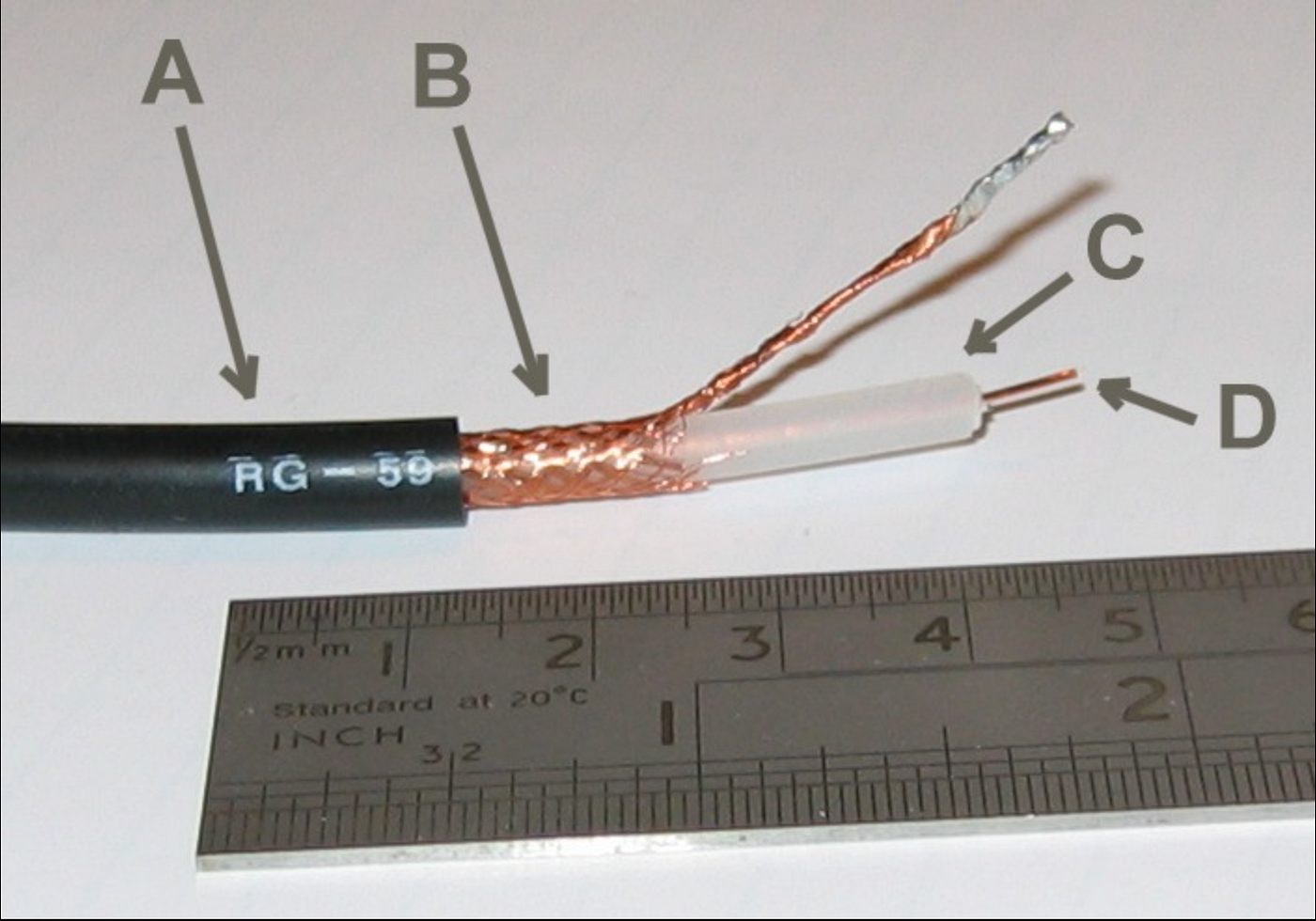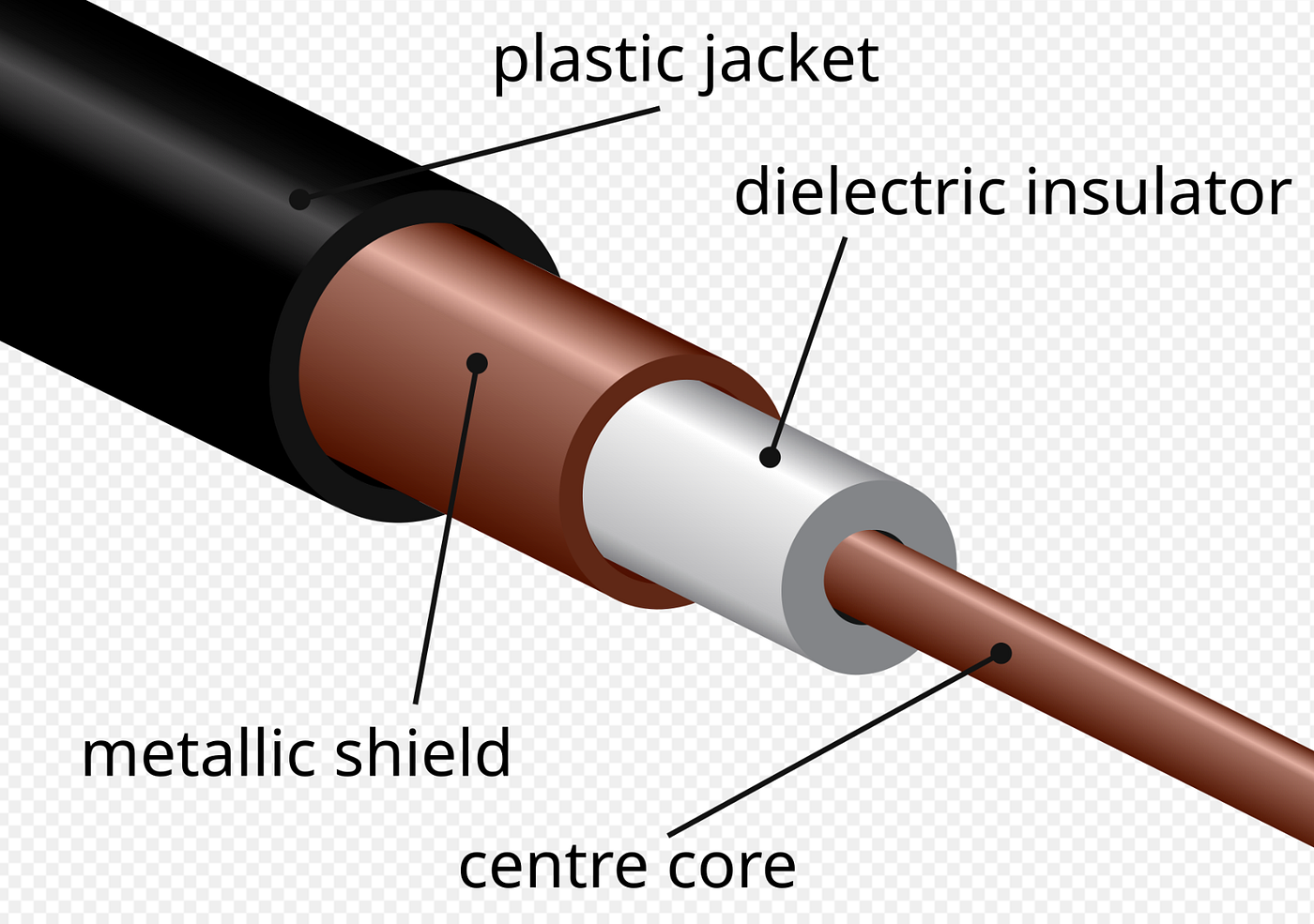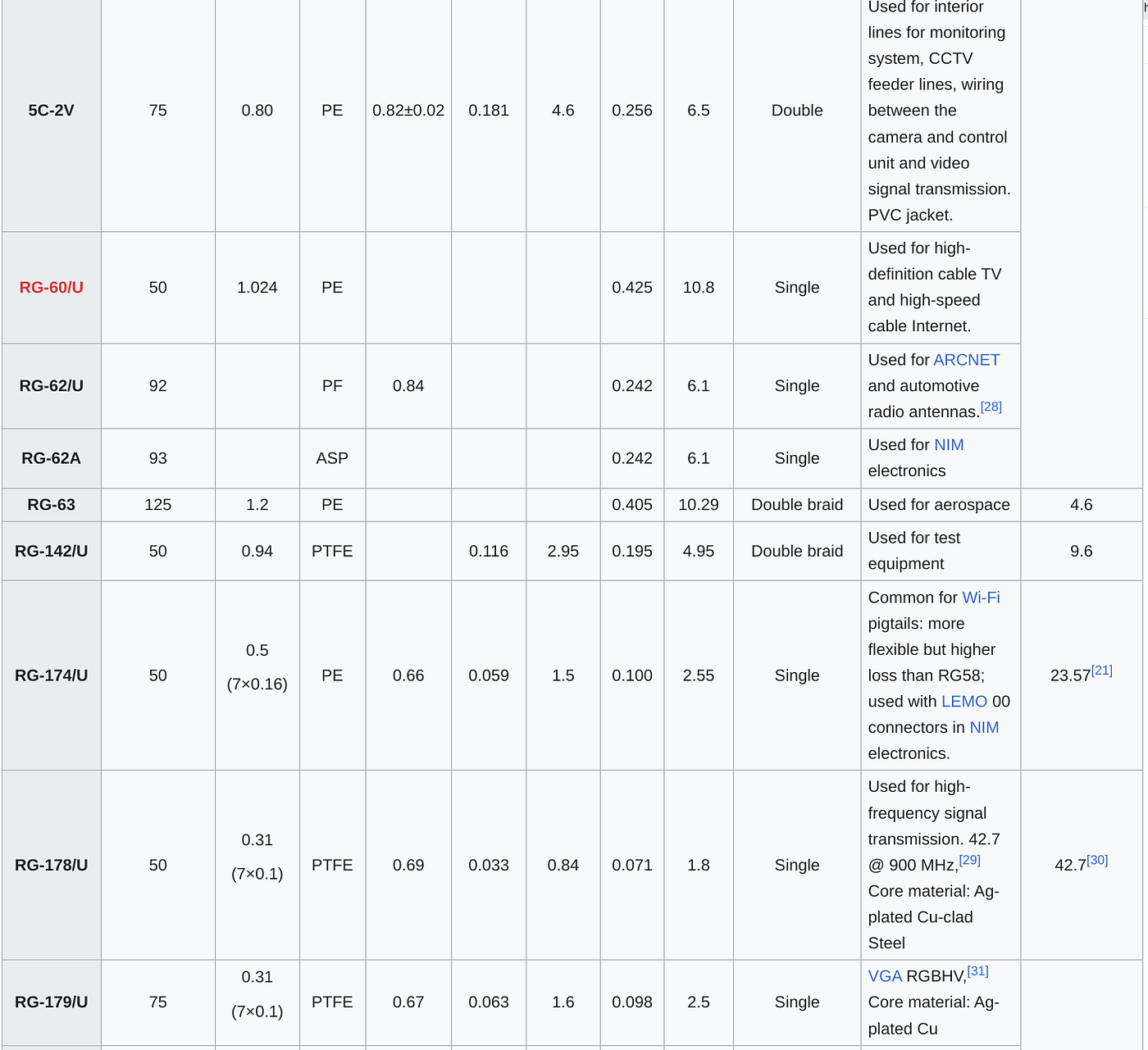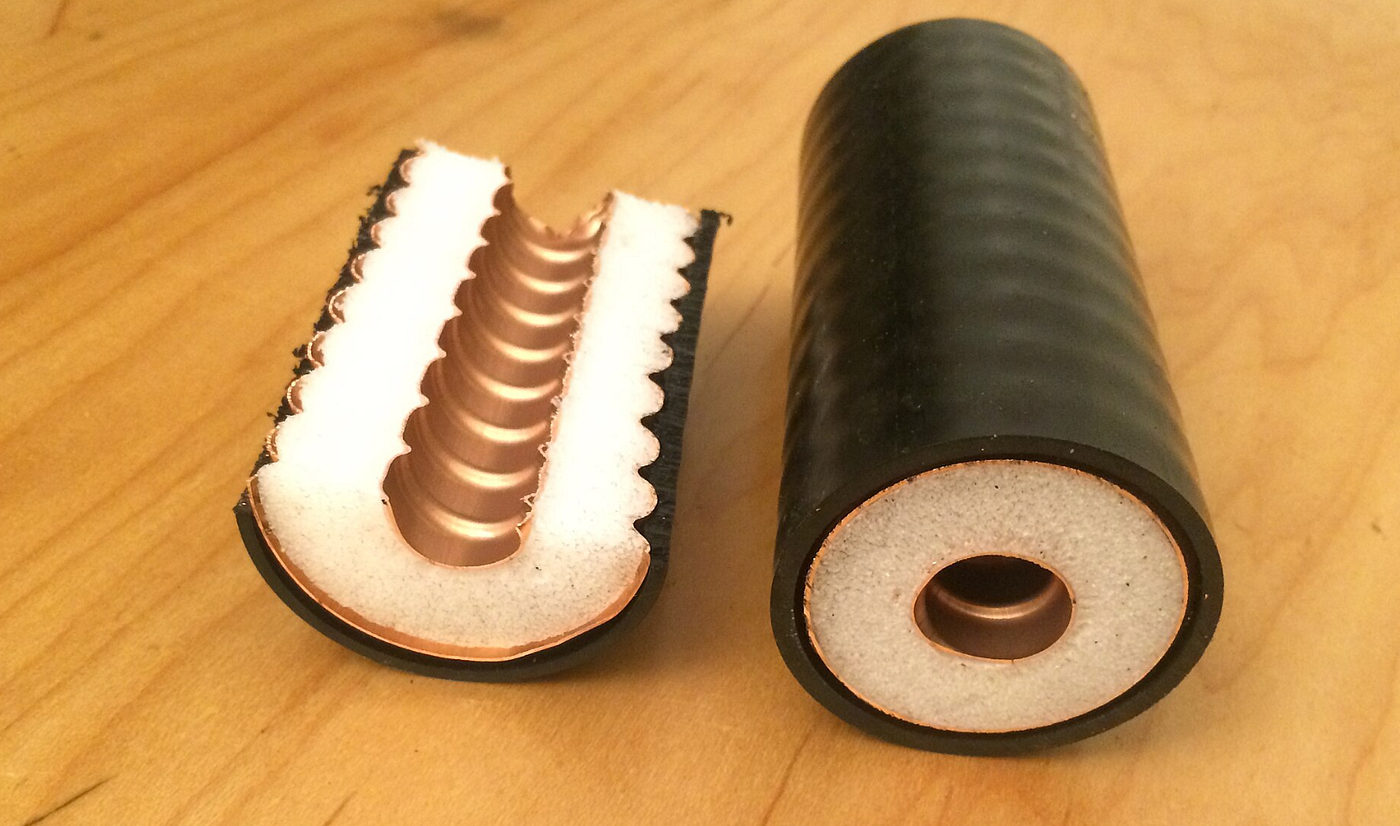Feedline Fundamentals: Coaxial Cable
Finding the right type of coaxial cable for your SDR station.
If you aren’t a medium member, you can read with no paywall via substack
As we’ve moved through the radio hackers series, we’ve started to look at some fundamentals that you’ll encounter as you get started on your journey. This means we’ve covered antennas, possible receiver options and just how you might look at powering some of these devices and getting them to talk to your computer easily for receiving purposes.
But, if you’re new to radio, in a world full of wireless and wifi it might surprise you to learn that one thing that can’t be done wirelessly is the connection between the transmitter and the antenna. While there are certainly cheat modes we can use (like putting a Rpi at the antenna and accessing it online), like many other things in life, you’ll get what you give with this one. Oliver Heaviside held a patent for coaxial cable in the late 1800’s. Source: Wikipedia.
Oliver Heaviside held a patent for coaxial cable in the late 1800’s. Source: Wikipedia.
So, that means a quality feedline, with good connectors and a quality fitting job. Get it right, and you’ll pick up weak signals from thousands of KM’s away. Get it wrong, and you’ll be forever frustrated. If you’re legal to transmit and really unlucky, you might even find yourself running an alligator station, all mouth and no ears. So needless to say, it’s important to get that bit right. Let’s break it down and get started!
What Is Coax Anyways?
Typically referred to as “coax”, coaxial cable is a multi-layer shielded electrical cable. Unlike power lines though, the job of coax is to transmit radiofrequency signals with minimal loss and/or distortion to the transmitted signal.
While coax can vary according to its type and use case, typically we’ll find some similarities between the different types regardless. It’ll have a centre conductor, an outer braid and a dielectric shield that works to isolate the two, as well as a heavy plastic outside cover that helps to protect it.
While most coax types tend to look quite similar, due to their versatility you’ll usually find them in all sorts of places. Hospitals, aircraft, theatres and even miles underwater on the bottom of the ocean are all places where you’ll find coax.
In the modern world, fibre optic cable has been responsible for replacing a lot of older coax-based systems. However for satellite radio, amateur radio and military radio, in particular, coax is where it’s at, so despite its age, it’s worth learning about the role it plays in a receiving or transmitting station.
Lastly, it’s worth mentioning that the impedance of coaxial cable varies according to its use case. Radio-based coax will work nicely at 50Ω impedance.
While coax that is used in video or television systems will operate slightly higher, at around 75Ω impedance. Fixing mismatchs is possible, but when dealing with weak signals it’s usually a good idea to use to correct type for your installation.
Note: Coax isn’t the only type of feedline used. There’s also ladder or twin line, but we’ll cover that in another article.
Different Types.
Like people, coax comes in a vast array of sizes and uses. Typically, we’ll find a number of differences that can help us select the right type of coax for our installation. In addition to impedance differences, the biggest variance you’ll find will deal with cable loss.
Essentially what this means is, that for each foot of cable installed, we’ll expect to see a signal loss of X db in a well-equipped installation due to cable loss. While this is a secondary concern in terrestrial installations, it becomes far more important when dealing with weak signal work.
In fact, if we look at the cheapest, nastiest cable we can find (RG-58) and do a comparison to something we might find in a satellite installation (LMR400) we’ll clearly see the loss variances between the two
Our poor quality RG-58U has loss levels at around 13.1db per 100ft.
Whereas our space quality LMR-400 has a loss rate of just 3.5db per 100ft. S So our RG-58 has far greater levels of loss compared to our LMR400. So as you can see, cable choice most certainly matters. At that loss rate, it’s the difference between receiving a weak signal from space and missing it entirely. And, when we go up one more, it’s even more pronounced.
Hardline (Known as Heliax) has a loss rate of just .2 db per 100 feet. So, it’s fair to say that Heliax is the gold standard cable for installation. And, at a cost of around $ 25 USD per foot, it would want to be! Heliax is a chunker. Source: Wikipedia.
Heliax is a chunker. Source: Wikipedia.
Why So Inflexible?
This variance between loss rates is no coincidence. It’s directly relevant to the quality of the line and the size of the centre conductor. And while you’ll not need to worry about flexibility in base stations you’ll immediately find that's an issue when you start trying to work out how you might try to take your station mobile.
So when assessing your station and looking for what type of coax you might need, it’s worth asking yourself some qualifying questions to figure out what is best for your situation. RG58 would be terrible for a high-power commercial installation, while Heliax would be just as bad for a mobile install. Choosing the right tool for the right job is as always, super important.
Pitfalls and Limitations
While coax is quick and easy to get started with, it’s not without its shortfalls. While we covered cable loss in the earlier parts of the articles one of the biggest issues faced is by common mode current flowing along the line.
Common mode current on coaxial cables refers to an unwanted electrical current that flows in the same direction on both the inner conductor and the outer shield of the cable, relative to ground or another reference point.
Unlike the intended differential mode current, which carries the signal from source to load and back, the common mode current does not contribute to the signal but can cause issues like electromagnetic interference (EMI), signal degradation, and potential safety hazards.
This current can arise from imbalances in the system, external electromagnetic fields inducing currents on the shield, or ground loops where different parts of the system are at slightly different ground potentials.
Mitigating common mode current involves techniques like using baluns, and ferrite cores, ensuring proper grounding strategies, and maintaining the integrity of the cable’s shielding.
It’s worth mentioning that more often than not this is more pronounced on transmitting stations. Receive-only stations typically tend to suffer from fewer issues with this type of thing, but it’s something to be aware of nevertheless. Common mode (top) differential mode (bottom)
Common mode (top) differential mode (bottom)
In Closing
If you’re studying for an amateur radio license, you’ll find pretty quickly that studying feedlines deserves far more attention than the 10 minutes this blog post will spend touching on the subject. In fact, moving towards advanced grade licenses means you’ll spend literally hours focusing on and learning about these issues.
However, if we were to take away just a few points from today's article we should endeavour to remember that:
Coaxial cable is most commonly found in 50Ω & 75Ω specifications.
Common mode current exists, and in a bad installation, it can cause RF burns, damage to equipment and electrical interference.
In our next article on Feedline Fundamentals, we’ll take a look at the good old twin lead and see how it shapes up in comparison to coax.
Stick around a while longer, we’re starting to get to the good stuff now!
If you found this article insightful, informative, or entertaining, we kindly encourage you to show your support. Clapping for this article not only lets the author know that their work is appreciated but also helps boost its visibility to others who might benefit from it.
🌟 Enjoyed this article? Join the community! 🌟
📢 Join our OSINT Telegram channel for exclusive updates or
📢 Follow our crypto Telegram for the latest giveaways
🐦 Follow us on Twitter and
🟦 We’re now on Bluesky!
🔗 Articles we think you’ll like:
- What The Tech?! Rocket Engines
- OSINT Investigators Guide to Self Care & Resilience
✉️ Want more content like this? Sign up for email updates



































































